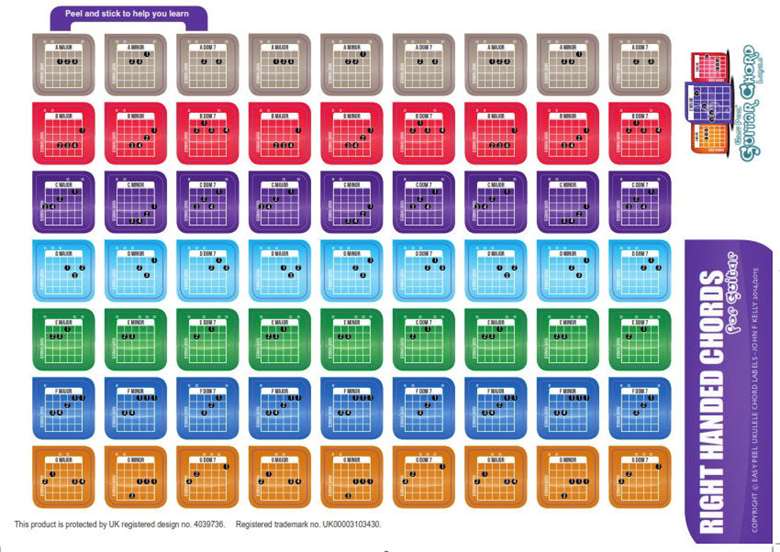Guitar Resource Reviews: Easy Peel Chord Labels
Al Summers
Monday, February 1, 2021
Al Summers reviews the Easy Peel Chord Labels and Training Book by John F Kelly for guitar and ukulele.

These stickers for guitarists and ukulele players are an excellent idea. The philosophy behind the product is encouraging learning and creativity with sheets of easy-to-use, handy stickers available for pupils and teachers, all ready to be peeled off individually.
For example, if a student playing a song from a chord/lyric chart comes across a D7 symbol (for a D dominant 7th chord) and does not know a voicing, a sticker for the most common fingering can be stuck on the chart in an appropriate place. Quick, easy, and effective.
Stickers are colourful (although not the same internationally common colour coding for note names featured on Boomwhackers, xylophones and many types of bell instruments), clear, large enough to see well and compact enough to fi t somewhere on most pieces of music or song charts. The stickers are also available in left-handed versions as well as for ukulele.
I have a small quibble with the B and F dominant 7th chords in the latter set not being the easiest fingerings available when this is evidently aimed at beginners. Also, in the guitar set, the C chord given is a second inversion (and slightly more difficult for a beginner to achieve than a root position version).
The songbook is simple, easy and basic and, above all, refreshingly encouraging. It makes a useful start for those wishing to accompany songs or to write their own. There is a companion CD, which is necessary, as some material is original, and songs are shown as lyrics and chords only. The book can also be spiralbound to lie flat, making it simpler for children to use.
Twinkle Twinkle is described erroneously as a poem with a tune added later (perhaps to avoid complicating the matter with reference to Ah! vous dirai-je, maman). The book ends with encouragement to compose, something we need more often. For tutors who like to use reward stickers, there are sheets of bronze, silver, and gold stars.
My only suggestion is that more chords be made available, perhaps a compromise between Philip Berkin's comprehensive RYGB system and the 21 chords (seven note names and three chord types) covered here.

